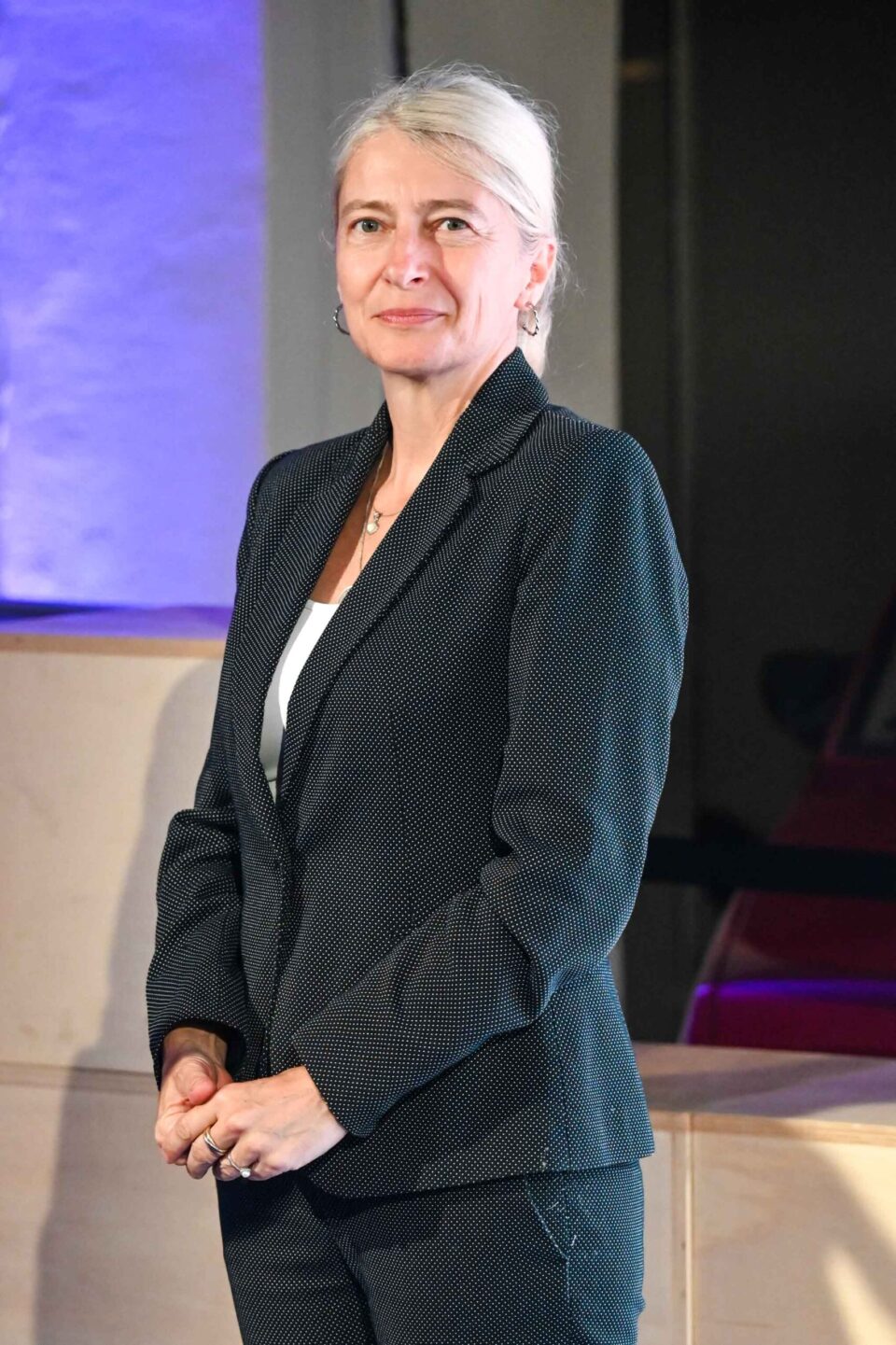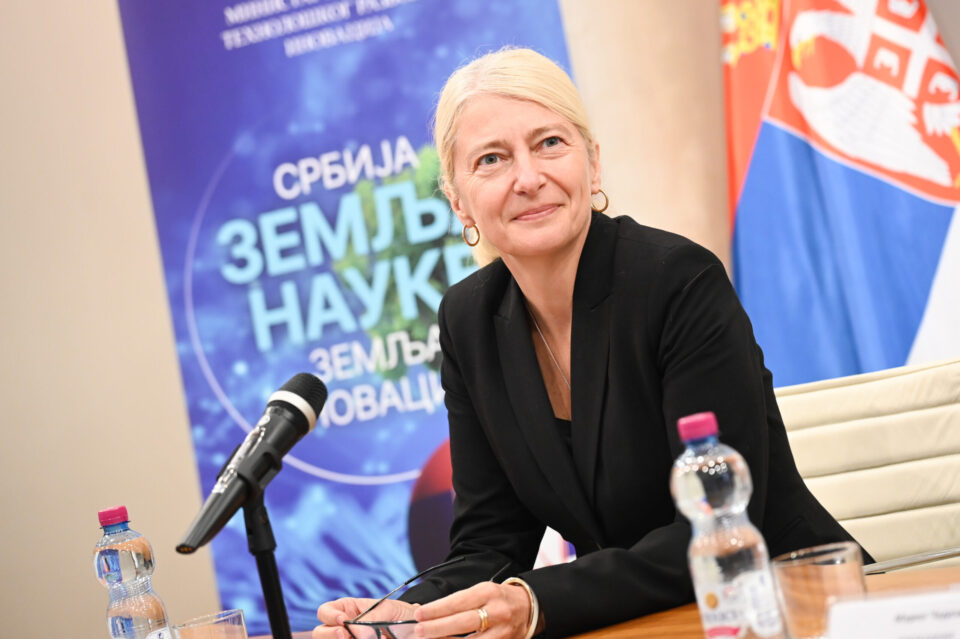Scientific challenges and achievements in 2023

We talked with Dr Jelena Begović, Minister of Science, Technological Development and Innovation, about whether science in Serbia was stagnating, how to make it more popular with young people and the projects that the Ministry has been working on.
Modern civilization and humanity are progressing at an incredible speed, but one gets the impression that there have been no significant scientific discoveries and achievements for a long time. Is that true or is it that such news does not come to the fore from overwhelming trivia?
Modern science often deals with complex and subtle questions that require deep understanding and years of work. Also, public interest in science plays a key role in recognizing and communicating scientific achievements. In Serbia, the Centre for the Promotion of Science plays a significant role in popularizing science and educating the public about the importance of scientific research.
Although major scientific breakthroughs may not be reported by the media as often, advances in science are taking place and have a profound impact on our daily lives and future. The discoveries in science that have brought scientists Nobel Prizes are, especially in medicine and chemistry, discoveries that have fundamentally changed our lives. For example, this year’s prize was awarded for findings that enabled the development of an RNA vaccine against COVID-19.
What would you single out as the most significant scientific and technological achievement in the world in the last ten years?
After four years of research in which more than a thousand scientists participated, in 2012 physicists at CERN announced and in 2013 confirmed the discovery of the Higgs boson. This particle helps explain why all other particles in the universe have mass.
There is also Elon Musk’s Starlink, an ambitious project that aims to create a global network of satellites for Internet access. This project aims to provide people all over the world, including rural areas, with access to fast and reliable Internet.
Also, NASA’s James Webb Space Telescope was launched in 2021 on a mission to study the earliest stars and peer further into the universe’s past than we ever could before. This is the largest and most powerful space telescope ever launched and it is located at a distance of 1.6 million kilometres from Earth.
Furthermore, this year, scientists finally read the genetic information (DNA sequence) of the Y chromosome, one of the two sex chromosomes present in humans, thus completing the reading of human genetic information after three decades. This feat was extremely difficult because of the complex structure within the Y chromosome, but also important, because it will provide crucial information related to our health, including the prevention of cancer and cardiovascular diseases.
Artificial intelligence (AI) is a machine programme that simulates human behaviour or thinking and can be trained to solve specific problems. The development of artificial intelligence has accelerated tremendously and found successful applications as a tool in medicine, pharmacy, agriculture, robotics, the automotive industry and art. I’m confident that we will witness how ubiquitous this technology will become in our lives.
Progress is inevitably happening and has a profound impact on our everyday lives and future
How much does Serbia keep pace with the rest of the world in terms of science and technological development? We are witnessing that in the era of globalization, everyone has access to everything, but if we scratch the surface, things are very different. We see that some countries, including ours, often lack modern resources (e.g. innovative therapies in medicine).
The Serbian government has clearly demonstrated that it recognizes the importance of progress in science and technological development and actively works to ensure that we are included in global trends. The BIO4 Campus project is an exceptional step forward in this sense. This campus will bring together the academic and start-up community, as well as large companies to encourage innovative research in biomedicine, biotechnology, bioinformatics and biodiversity. The campus will be a hub for the development of innovations and as such, will contribute to the progress of medicine, pharmacy, environmental protection and biodiversity, but also to Serbia’s sustainable development.
Also, the Biosense Institute, the only European centre of excellence outside the European Union, plays a key role in promoting innovation in the digitization of agriculture and nanotechnology, thus contributing to the modernization of agriculture in Serbia.
The government has been continuously working on increasing allocations for innovative therapies, which are often needed in the treatment of very complex diseases. From 2012 to date, the state has increased investments in rare diseases, including diagnostics and therapies, by 32 times. Thanks to the state’s efforts, some of the medication used for these therapies is also produced in Serbia today.

Bearing all of that in mind, what is the significance of the project launched by your ministry “Serbia, the land of science, the land of innovation” and what is the realistic outreach of such a project?
The nationwide project “Serbia, the land of science, the land of innovation” aims to promote science and technological development, support innovation and facilitate the involvement of the private sector and academia in these activities. The Science and Innovation Day will be held throughout Serbia in cooperation with the Centre for the Promotion of Science, the Chamber of Commerce of Serbia, the Science Fund and the Innovation Activities Fund.
In the last few years, the state has provided various tax incentives and financial support programmes for innovative ideas and companies that want to improve their business through research and development activities. During Science and Innovation Day, people will have the opportunity to learn more about these programmes and how they can use the available resources to support their innovative projects, as well as see examples of good practices that have successfully been implemented.
What needs to be done to make science more popular among young people, i.e. children of school age? We can see that the interest in studying at science faculties has been diminishing, while the faculties whose diplomas can lead to well-paid jobs are becoming increasingly popular. Science faculties are not in that group.
The popularization of science among young people, especially children of school age, is a crucial step towards building a scientific culture in society. CPN and the Fund for Young Talents continuously communicate with young people and support them through various programmes and events, as well as provide scholarships.
The aspect that we are quite strong at and which needs to be further popularized among young people is STEM fields which include natural sciences, technology, engineering and mathematics. It is very important to explain to young people what career paths they have available ahead of them. I don’t think it’s true that there is no money in science because some of the most successful fast-growing start-up companies were created on ideas that come directly from the lab, i.e. from scientists.
I think we all need to do more – schools, parents, teachers and the media – to create an environment in which science and innovation have a well-deserved, central place.
The government has been continuously working on increasing allocations for innovative therapies
Can the construction of the BIO4 Campus in Belgrade boost the popularity of science and young people’s interest in it?
The BIO4 Campus is a platform where experts can cooperate in a dynamic and inspiring environment. We want to build a completely different ecosystem to enable young people to take on challenging projects, innovate and collaborate with industry.
The campus will be a hub for modern research in bio-fields, from bio- and chemical engineering, through artificial intelligence and nanotechnology to new medical therapies and agricultural solutions. Young people will have access to the latest technologies and modern infrastructure, while the very concept of gathering experts from different fields in one place will inspire them and enable them to develop their passions and talents.
We expect that BIO4 Campus will become the epicentre of innovation and a place where young scientists and researchers not only from Serbia but from all over the world will be able to realize their ambitions, create new technologies and contribute in the best possible way to the development of science in Serbia.
Your Ministry’s new scientific website eNauka is a novelty too. How well did the scientific community accept this website and what does it bring us, i.e. what doors can it open for us?
Since the launch of the eNauka website, we have received extremely positive feedback from the scientific community. This was a significant step towards the modernization and digitization of our scientific community. eNauka serves as a central place for scientists, researchers, students, and the general public where they can access current scientific works and news from the world of science in Serbia.
The eNauka website contributes to the democratization of knowledge, by making more and more research and publications accessible to the public without any obstacles, which, in turn, helps the wider population to become familiar with the latest scientific achievements and contributions of Serbian scientists. It also boosts transparency, because the website provides better insight into current research results, which again increases the transparency of the work of our institutions. It also digitizes the operations of scientific and research institutions. The system enables all procedures related to scientific and research activities to be carried out electronically, without paper, in significantly shorter terms and more transparently, for the benefit of researchers and institutions. These are the online NIO (science and research organization) accreditation procedures, the selection of scientific titles and the work of the parent scientific committees.
So far, there are about 19,500 active researchers in eNauka’s database, plus 206 scientific research organizations and 624,806 scientific results.
We are continuously improving the website, adding new functionalities and improving the existing ones, to further contribute to the development of science and innovation in our country.
The popularity and use of artificial intelligence have been growing drastically recently, which, at least for now, is deemed controversial on many grounds. What’s your take on that? How can we avoid the negative consequences of AI and how can we use this ‘spark’ in the right way?
Artificial intelligence can have a positive impact on different aspects of our lives. It is a tool that I believe, with a responsible approach and good regulation, can be extremely helpful, above all in solving global challenges in medicine, agriculture, transport and energy.
The key to avoiding the negative consequences of AI is the development and implementation of ethical guidelines and standards. Serbia is one of the first countries in the world to have adopted the Artificial Intelligence Development Strategy and Ethical Guidelines for the Development, Application and Responsible Use of Artificial Intelligence, with the view of setting up frameworks for the sustainable and responsible development of this technology. The Strategy places special emphasis on transparency, ethical use and protection of data privacy.
The key to avoiding the negative consequences of AI is the development and implementation of ethical guidelines and standards
We must educate the new generations and teach them how to use artificial intelligence responsibly. Investing in the research and development of these technologies and supporting start-ups engaged in the development of artificial intelligence is a step towards finding a solution that will not endanger anyone.
We strive to create an environment where artificial intelligence will be used to advance scientific research, innovate and solve complex problems. I believe that if the state, academic community, industry and citizens join their efforts, we can successfully manage ‘the spark’, as you call it and use it in the right way for the benefit of society.
